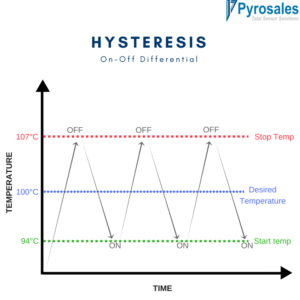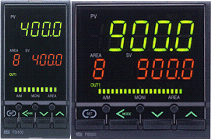What are RKC Temperature Controllers?
What are RKC Temperature Controllers?
Pyrosales is the exclusive Australian Distributor for RKC temperature controlling instruments. We strongly believe in the quality, durability and reliability of these temperature controllers. These controllers are long lasting and high quality instruments.
How does a temperature controller work?
A temperature controller (also referred to as PID controller), is a process controller. They are used to control and monitor temperature according to application needs. The simplest explanation for a temperature controller is: A temperature sensor is used as an input into the controller which is then connected to an output such as a heating element. Temperature control is a process in which the change of temperature of a space, or of a substance, is measured or otherwise detected, and the passage of heat energy into or out of the space or substance is adjusted to achieve the desired temperature. Temperature controllers are needed in any situation requiring a given temperature to be kept stable. This can be in a situation where an object is required to be heated, cooled, or both and to remain at the target temperature (set point), regardless of the changing environment around it.
A temperature controller is effectively a cost saving device as the instrument precisely controls temperatures without staff engagements. It shows temperature readings by comparing the actual temperature to the set temperature, which then provides the output to a control element.
PID Control
Proportional – Integral – Derivative (PID) controllers are Pyrosales’ most popular temperature instrument type. These particular controllers are control loop instruments – they automatically apply accurate and responsive correction to a control function.
PID controllers work by being capable of continually calculating ‘error values’ between the desired setpoint and the actual temperature of a meas
Auto tune: This is a function that is primarily designed to be available for PID controllers. This function automatically works out the best P, I, and D values to suit your process by testing how long your control elements need to turn on and off.
An example of auto tuning a PID controller:
Setting an oven to 100°C. The heating elements will turn on and take the oven from ambient temperature through to the set point. The auto tune function can assess how quickly the heating elements reach the set temperature – therefore being able to time how long they need to remain running, and when they should turn off. Auto tune aims to reach the set point as quick as possible without overshooting the desired temperature.
On – Off Control
The on/off function controllers are the easiest and effortless to utilise in Pyrosales’ range.
An on/off controller works by turning the control elements off when the temperature has reached PAST the set point value. As the temperature drops below the set point, the control elements will turn back on – turning off once it passes the set point. This process is continually cycling the temperature of the process.
Depending upon the desired set point and control process, the cycling of temperature and elements could happen at a faster rate, resulting in damaged elements or valves. If controlling temperature does not need to be precise, or machinery may get damaged by switching on and off too frequently – there is a function referred to as ‘hysteresis’ or commonly known as on-off differential. This function prevents the output from rapidly cycling through the temperatures and is available on all of our instruments.
An example of Hysteresis function:
Having an oven set point at 100°C. The elements will turn on and off as soon as the temperature is reached, continually cycling at a rapid pace. Hysteresis allows the user to provide a wider range of temperatures in which the control elements will switch on and off. Rather than keeping the set point at 100°C, a range is provided to slow down the cycle – such as having elements turn off at 105°C and turn on at 95°C.
Our popular range of controllers
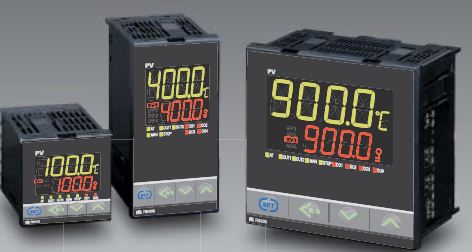
CB Series Controllers: The CB range of controllers are our most popular range and are very simple to use. They are general purpose, single loop process controllers – 1 sensor input and 1 output. The range varies in DIN sizes/physical sizes, depending on your panel space – but they all provide the same functions.
High Performance Controllers: The FB Series and HA Series are popular high performance controllers. They are a finer control, faster and more accurate. Used only for more critical applications which rely on precise accuracy including Laboratories and Semi-conductor industries.
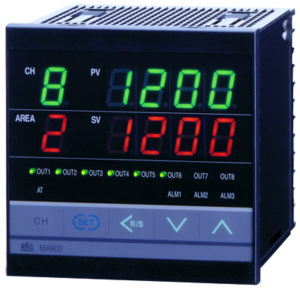
Ramp/Soak Controllers: These programming controllers provide a ‘ramp/soak’ function. A RAMP action occurs when the controller increases the temperature from ambient temperature to a set point. It remains at the set point for a desired amount of time (referred to as SOAK) – and then will ramp up to a new pre-selected temperature. This RAMP/SOAK process repeats according to how it has been programmed.
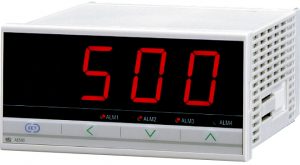
RKC temperature controllers are suitable for a vast range of applications eg:
- Plastic extrusions
- Scientific applications
- Food and Beverage
- Heat treating
- Ovens – including coffee roasting
- Furnaces
- Incubators
- Temperature Alarming Systems (providing alerts to certain parameters)
Pyrosales staff are ready to help you with any enquiry you may have. Our experienced sales engineers will assist you in choosing the correct controller for your application. Some consideration should be taken on the following when selecting an appropriate controller:
Information to consider when choosing your controller
- Application that requires a controlled process and spacing available for controller size
- Input sensor type such as RTD or thermocouple
- Length of stem of the sensor if required
- Output type: relay, SSR or analogue for example 4-20mA
- Type of function you require: PID or on/off
- Any other relevant information: Alarms, ramp/soak, auto tune etc.


